How to plant gooseberries in autumn: optimal timing and planting rules
Autumn is a great time to plant berry bushes and fruit trees. Indeed, it is very convenient to plant gooseberries in the fall, since at this time there is more free time, and it is possible to carry out the procedure as carefully as possible.
In this article you will find answers to the questions: when (in what time frame) and how to plant gooseberries correctly in the fall, so that it has time to take root well in a new place, successfully survived the winter and begin to grow actively next year.
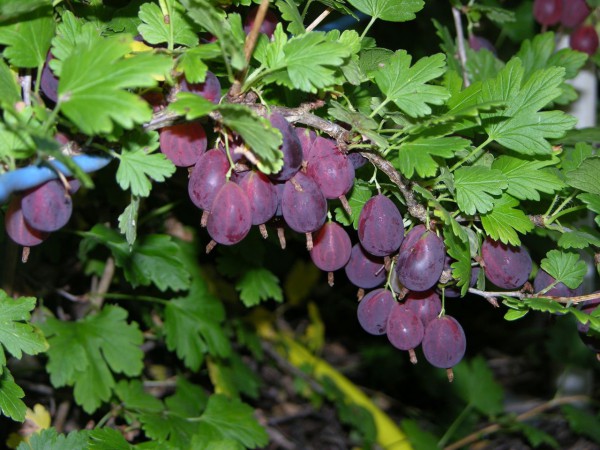
Content
When to plant gooseberries in the fall, in what month: optimal planting dates
One of the most frequently asked questions of most gardeners choosing the time for the autumn planting of gooseberries: "When exactly to do this, in which particular month and / or how many weeks before the first frost?"
So, the optimal timing of planting gooseberries in the fall to a permanent place depends on the weather conditions and the climate of your region: the longer the positive air temperature lasts, the later you can plant. In any case, you should have time to plant a seedling 2-4 weeks before the expected cold weather, so that the plant can take root well in a new place and form new young roots (= prepare for wintering).
Important! In case of premature frost, the procedure should be postponed until spring, by placing the gooseberry in the basement for the winter, because, without having time to take root, the seedling may simply freeze out.
Advice! The site has a detailed article about spring planting gooseberries.
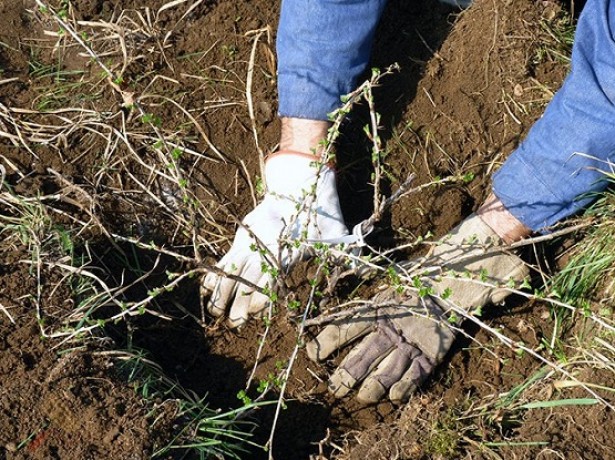
When is it better to plant - in spring or autumn
Many novice summer residents cannot decide in any way when it is better - in spring or autumn - to plant gooseberries in their personal plot
Of course, autumn is the best time to plant gooseberries, like most berry bushes. However, this does not mean at all that you cannot perform it in early spring, although in this case the survival rate and growth of shoots are usually worse (but not significantly).
By the way! The site has a separate material about spring planting gooseberries.
Autumn planting of gooseberries is more profitable and promising for the following reasons:
- Large selection of planting material. By this time, many nurseries and gardeners are selling gooseberry bushes of various varieties with an open root system, which means that you have an excellent opportunity to visually inspect the root system and purchase a gooseberry seedling without any defects.
- Minimal care for gooseberries after planting in the fall... Autumn rains will be able to provide the bush with a sufficient amount of moisture, and the low air temperature will not allow it to evaporate, which will contribute to the early rooting of the bush in a new place.
- High survival rate. According to statistics, gooseberry seedlings planted in autumn have a higher survival rate than in spring. This is due to the fact that the plant does not need to spend energy during this period on the growth of shoots and leaves, so it directs all its energy for rooting. The lower air temperature also helps the seedling to adapt faster to a new place.
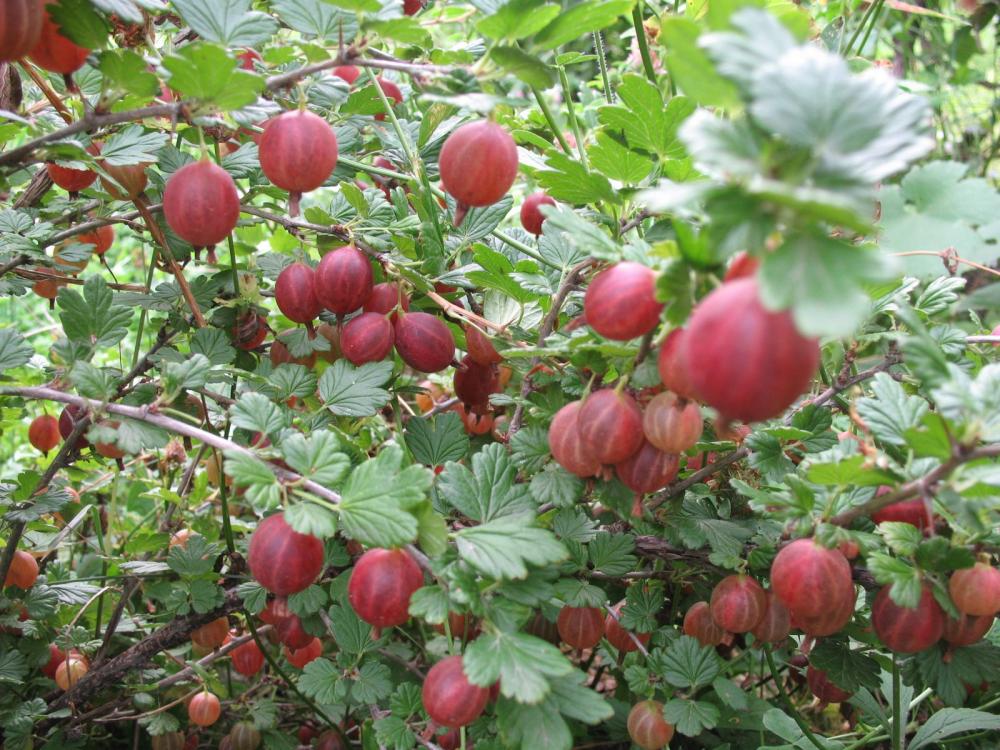
When to plant in autumn in different regions
Naturally, depending on climatic features, the timing of the autumn planting of gooseberries in different regions will differ:
- In the south of Russia, gooseberries can be planted until the last days of October.
- Gardeners of the Middle Strip and the Moscow Region are recommended to plant gooseberries in autumn in the second half of September and the first half of October.
And in the Leningrad region - until the first days of October.
- In Siberia and the Urals, it is possible to plant gooseberries in open ground only in late August and early September.
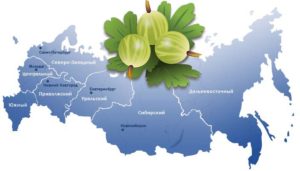
According to the lunar calendar in 2020
Choosing the optimal date for planting seedlings can help you moon calendar.
So, favorable days for planting gooseberries in the fall in 2020, according to the lunar calendar, are:
- in September - 19-26;
- in October - 3-13, 18-21.
Unfortunately, it is not always possible to get to the dacha on the indicated days, so the main thing is not to land at periods that are not suitable for the lunar calendar (new moon, full moon).
Unfavorable days, according to the lunar calendar, for 2020 for the autumn planting of gooseberry seedlings, the following dates are (days of the Full Moon and New Moon, as well as the period when the Moon is in Aquarius, since this is a barren and dry sign -italicized):
- in August -3, 4-5, 19, 31;
- in September -1, 2, 17, 27-28.
- in October - 2, 16,24-26, 31
- in November - 15,20-22, 30.
According to the lunar calendar, from the magazine "1000 Tips for Summer Residents".
How to plant gooseberries in the fall: features, requirements and step-by-step instructions
For the spring planting of gooseberries to be successful, you need:
- buy a quality seedling;
- choose a suitable place on the site;
- prepare and fill the landing pit;
- correctly plant a seedling;
- follow the simple, but mandatory rules of care after landing.
Next, we will analyze all the main points in more detail.
Video: how to plant gooseberries - planting in the fall
Selection and preparation of a seedling for planting
To choose a quality gooseberry seedling, you should be guided by the following basic criteria:
- It is best to give preference to two-year-old gooseberry bushes, which have a well-developed root system (about 25-30 cm long), and the aerial part consists of 2-3 strong shoots, at least 25-30 cm long.
When buying seedlings with an open root system (ACS), it is highly desirable to purchase exactly 2-year-old specimens. But seedlings with a closed root system (ZKS) can be purchased both 1-year-old and 2-year-old.
- Naturally, the seedling should have a healthy appearance without any signs of disease and pest infestation (glass, powdery mildew etc.), as well as mechanical damage.
A seedling in a container (with ZKS) should have a lot of leaves, and the length of the shoots should be about 30-50 cm. It is rather difficult to assess the root system, but it is possible. The seedling should sit firmly in the container, this will mean that the roots are well braided with an earthen ball and the plant was originally grown in a pot, and was not transplanted a couple of days ago.
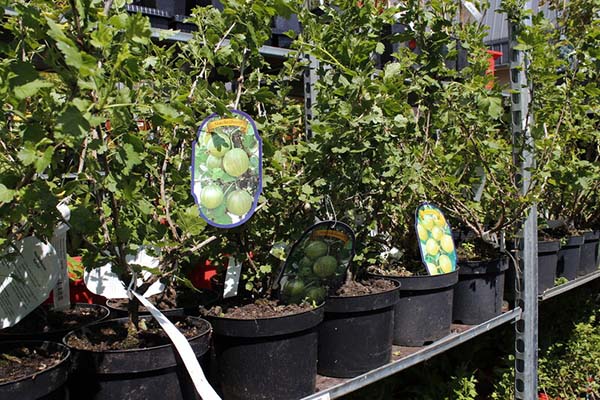
Variety selection
The main scourge of gooseberries is powdery mildew (spheroteka)... Therefore, if you do not want to constantly fight this dangerous fungal disease, then you should purchase and plant the most resistant or weakly affected gooseberry variety, for example, Russian, Kolobok, Eaglet, North Captain, Vladil, African, Golden Light, Komsomolsky, Muscat, Fertile, Northern grape.
How to prepare a seedling
After purchase and before planting, you will need to somehow store the seedling, namely, wrap the roots with a damp cloth and place in a bag.
Before planting a seedling, for better survival of its rhizomes, you can dip it in a clay mash, reminiscent of thick sour cream in consistency, or hold it for a couple of minutes in any root formation stimulator (for example, in Heteroauxin or Kornevin).
Advice! Also, before planting, it is recommended to cut too long and dried roots, shortening them to 20-25 cm (or living tissue) and completely cutting out the damaged ones.
Choosing a landing site
The gooseberry prefers sunny locations, so choose a well-lit and open area.
By the way! In principle, gooseberries will grow quite normally in light partial shade, but not in the shade.
In no case should you plant gooseberries in a lowland, in swampy and waterlogged places, as in the case if your groundwater is close (closer than 1.5 meters).
In this case, you can plant the gooseberries on an artificial hill.
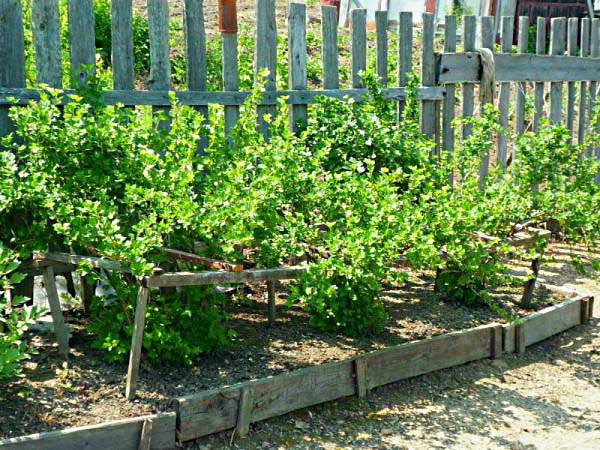
Suitable soil
Gooseberries love to grow on light (loose) and fertile soils, the same loam or sandy loam soil. In this case, the acidity of the soil should be neutral.
Gooseberries really dislike acidic soil. You can lower the acidity (deoxidize) the soil by adding to it dolomite flour, slaked lime, chalk or wood ash.
Naturally, if you periodically apply fertilizer and make regular watering, gooseberries will grow well in poorer sandy or clay soils.
However, if the soil is excessively clayey, the water will stagnate, the root collar will rot and the seedling will simply disappear. On the contrary, if the soil is too sandy, the seedling may dry out from lack of moisture, which will evaporate very quickly after watering.
Advice! To make the clay soil loose, it is mixed with sand.If the soil on the site is sandy, then clay is added to it.
At what distance to plant
As a rule, it is recommended to leave a distance of 1.2-1.5 m between the gooseberry bushes, the width of the row spacing is 2-2.5 m. large space, and harvesting from individual bushes is much faster and safer than from a live thorn hedge.
Important! In order for the gooseberry to develop normally, the distance to the fence should be at least 1, and preferably 1.5 meters.
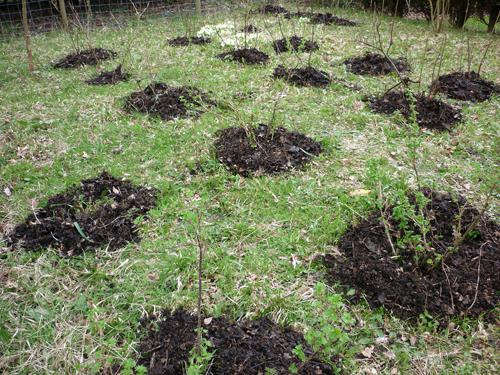
Culture Neighborhood Rules
Many gardeners are wondering if it is possible to plant gooseberries next to currants.
In any case, you should not plant too close to raspberries, because raspberries will simply shade your gooseberries.
At what depth to plant (what should be the planting pit)
The optimal size of the gooseberry planting pit is 50 to 50 centimeters (depth and width / diameter), but it can be wider and deeper (up to 60 cm).
Remember! The larger the hole, the more fertile soil can be laid in it.
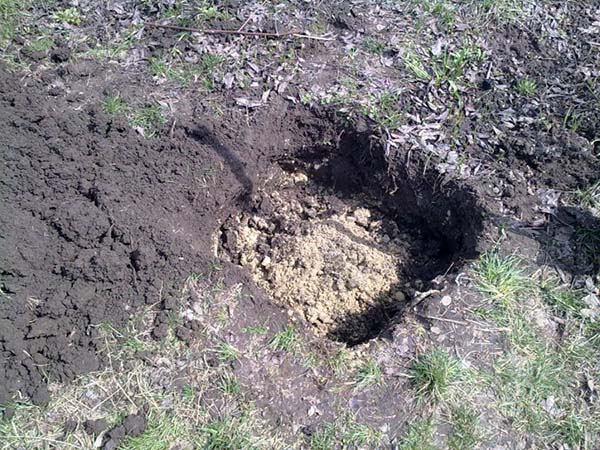
When planting, it is important to take into account one very important point - it is necessary to deepen the root collar by no less than 6-7 cm, otherwise the shoots growing from the root will be weak.
Advice! If you are planting a seedling in a container (with ZKS), then just make a hole 2-3 times larger than the container itself.
How and what to fill the planting hole
In order for the plant to quickly take root in a new place, the planting hole for planting gooseberries should be filled with a fertile substrate (soil mixture), namely apply organic and mineral fertilizers:
Important! Mineral fertilizers are imperatively required carefully to mix with earth and humus.
- the top fertile layer of soil (which you have left after digging a hole);
- compost or humus (bucket);
- deoxidized high-moor peat (optional and possible);
- superphosphate (80-100 grams) or 300-400 grams of bone meal;
- potassium sulfate or potassium salt (30-40 g) or 300-400 g wood ash.
Or you can simply pour in about 100 grams of diammophoska (or, in extreme cases, nitroammophoska), of course, if you use mineral fertilizers.
Direct landing
Step-by-step instructions for planting a gooseberry seedling in the fall:
- Fill the planting hole halfway with nutrient mixture.
- Further, if desired (many water only after planting, others - both before and after - as you like), you can slightly spill the nutrient soil with water.
- Make a small cone-shaped mound in the center of the planting hole.
If you are planting a seedling with a closed root system (in a container), then you do not need to make any mounds, but simply plant it in a prepared planting hole without disturbing the earthen coma.
- Place the seedling in the center of the mound and spread the roots down to the sides (the roots should in no case bend and stick up!).
Note! Gooseberries, unlike currants, are planted without a slope.

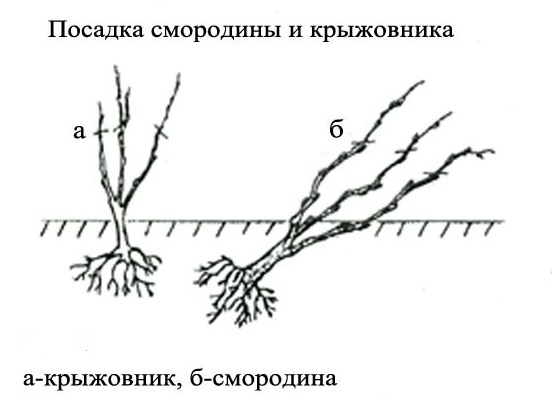
- Cover with earth (the top fertile soil layer mixed with humus or peat), while slightly lifting and shaking the seedling so that the earth wakes up between the roots and fills all the voids.
- Compact the soil to anchor the seedling in its new location.
Note! Some gardeners recommend burying the root collar a few (preferably 5-7) centimeters into the soil for good tillering. This will enable the gooseberry to develop additional shoots directly from the ground and thereby significantly increase the width of the bush. However, given that the earth is likely to settle, it is better not to deeply deepen initially.
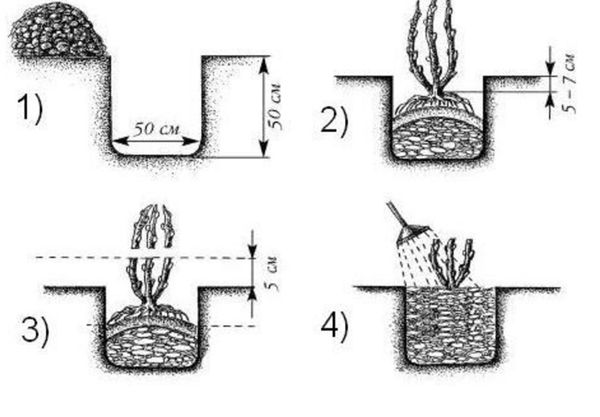
On the other hand, there is an opinion that the gooseberry does not like it when moisture accumulates near the root collar, so it is better to plant it flush with the soil surface or even slightly higher (since the earth will surely settle).
By the way! Remember that the root collar is where the first root leaves the trunk.
- Next, you need to make a hole (roller) along the diameter (perimeter) of the trunk circle 5-10 cm high.
- Then pour it abundantly, pouring out about a bucket of water (pour it out gradually - wait for it to be absorbed, and add more).
Video: how to plant gooseberries in the fall
Gooseberry care after autumn planting
There is almost no need to take care of the gooseberries in a special way after planting, unless you have to do it strongly enough. cut off its shoots (aboveground part of the bush).
Of course, if they have not yet been cut by the seller in advance, because, as a rule, they are sold or sent in this form.
How to cut tightly?
If the roots are weak and poorly developed, then the height of the shoots should be no more than 5-10 cm (i.e. 2-3 healthy buds), if stronger, then up to 15 cm (i.e. 3-4 buds).
Important! Now the main goal of the plant is to grow the root system in order to take root in a new place and survive the winter (not freeze out). The development of the aboveground part is not required, it is for this that it is shortened and equalized with the underground (in this case, even less is done).
Further, in order to avoid freezing of the roots and protect them from bulging, it is highly desirable mulch gooseberry near-stem circle with a layer of 5-8 cm. For this, humus, mown grass, hay, straw or rotted sawdust are perfect.
Mulch can also help to avoid dry roots and excess moisture evaporation.
Of course, we must not forget about watering, especially if the autumn is dry. In general, the autumn natural moisture is usually enough.
Later in the composition basic activities for the care of gooseberries will include the following:
Basic trimming gooseberries are usually performed after fruiting (in autumn), and in the spring they do only corrective, or rather sanitary pruning.
Of course, if you have not had the opportunity to prune gooseberries in the fall, then pruning in the spring is better than not pruning at all.
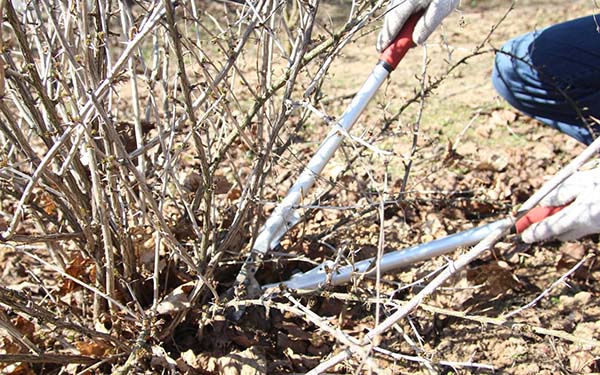
- fertilization;
By the way! More information about when and what to feed gooseberries in spring and summer, you will find in this material about feeding currants (because they are similar).
It should be understood that no additional fertilizing will be required in the next 2-3 years, of course, if you have carefully filled the planting hole with everything you need.
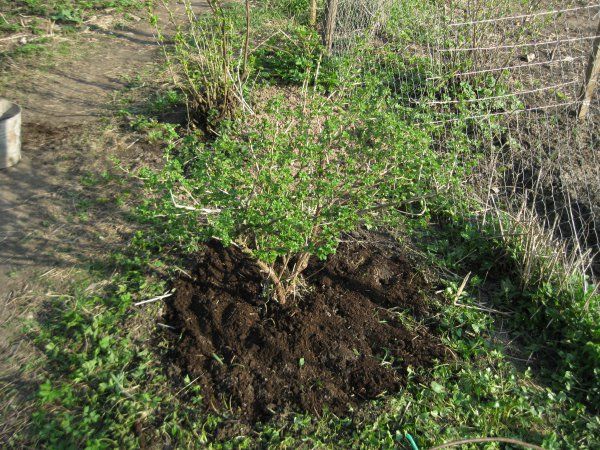
- carry out treatments for diseases (especially against American powdery mildew) and pests.
Important! After winter, still in early spring, You can pour boiling water over the gooseberries (similar to currants).
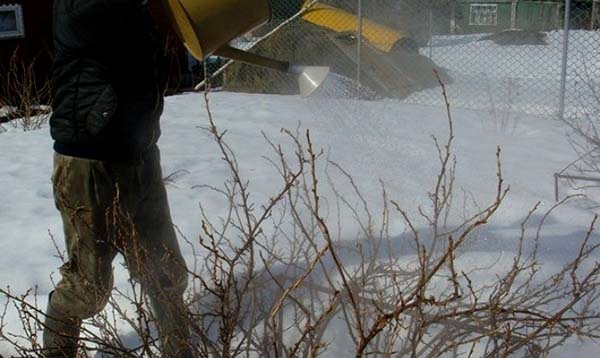
And then to carry out a full spring spraying shrubs with fungicides and insecticides (means against diseases and pests), as described in detail in this article.
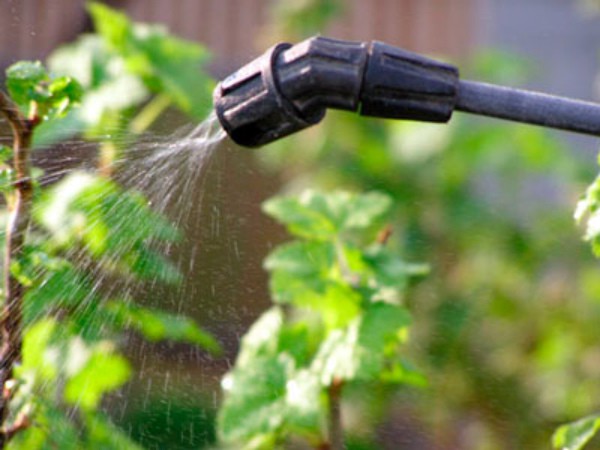
- If the gooseberry has grown too much (began to interfere) or his fruiting has noticeably decreased and he generally stopped developing - it's time for him plant or transplantbefore multiplying in one of several ways.
By the way! The site has a detailed article about how to transplant currants correctly in spring, summer and autumn (the technique is basically the same).
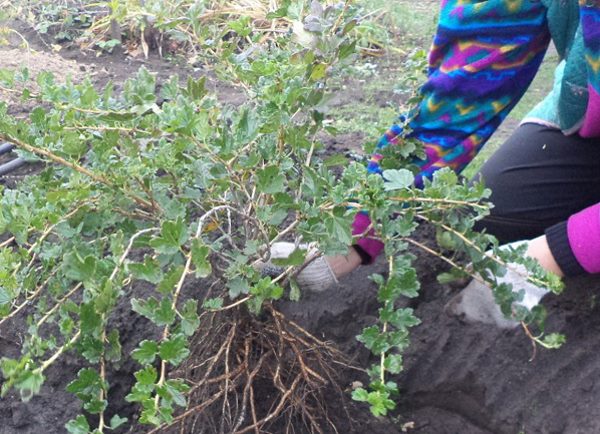
- Properly care for gooseberries in the fall and prepare for winter, as described in detail in this article about currants (and for gooseberries everything is the same).
Video: planting and caring for gooseberries
Popular mistakes when planting gooseberries in autumn
Novice gardeners who are poorly aware of the features of a shrub often make mistakes when planting it.In order not to step on the same rake, it is better to familiarize yourself with the typical misconceptions in advance and to protect the gooseberry from its own bad influence, excluding the following most likely mistakes:
- Initially purchased poor quality seedling.
- Are selected wrong landing dates - either too early (the seedling may have time to start growing), or too late (the root will not have time to develop enough and the seedling will die due to its freezing).
- Picks up too shaded place.
- Necessity is ignored making a sufficient amount of nutrient soil and fertilizers into the landing pits.
- Bushes are planted too close to each other... Strong thickened plantings poorly blown, which makes the plants start to hurt. Or, as a result of a lack of sunlight and nutrients, too small berries are tied.
- After landing no trimming.
- Not produced due post-plant care, namely, sufficient humidity is not maintained.
Well, let your gooseberry be as tasty as thorny (although thornless varieties are gaining popularity now)!
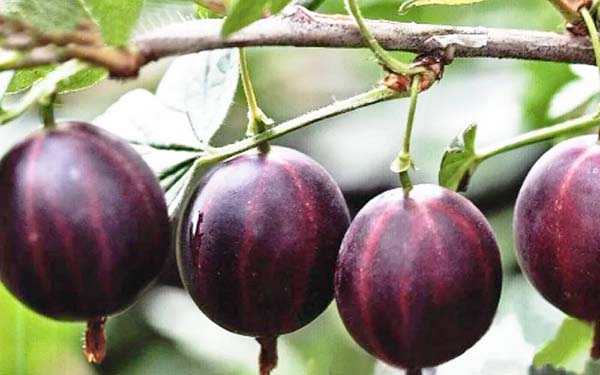
Thus, now you know how to properly plant gooseberries in the fall at your summer cottage. It's not that hard, is it? All that is required of you is to follow these instructions carefully and everything will definitely work out!
Video: how to plant gooseberries in the fall - planting and care features

